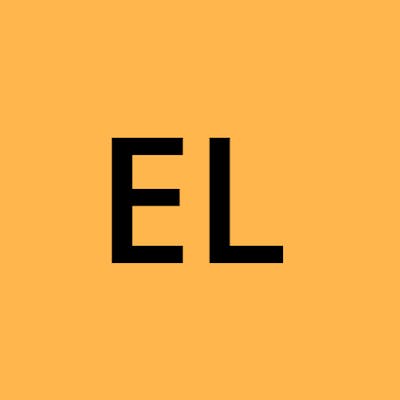Table of contents
No headings in the article.
Most of us would have heard about blockchain and even confused it with cryptocurrency, but the blockchain is far more than cryptocurrency and it is capable of so much more, they are not the same thing. It is the technology on which most cryptocurrencies are built. We wonder what it's all about. Below is what I have for you.
Blockchain is a system of recording information in a way that makes it difficult or impossible to change, hack, or cheat the system. A blockchain is essentially a digital ledger of transactions that is distributed across the entire network of computer systems.
The above is what blockchain is, to be honest if you give a child this, even most adults would not get what you are saying. Let me break it down now to the point that a child can even grab knowledge of what it is all about.
Block chain is formed from two words which are block and chain. Let use this scenario, three friends A, B and C went out to eat, after eating, A paid for the meal with cash since B and C didn't come out with any cash. B and C concluded to pay A back with 4.5 bitcoin each. When B transfers his own to A, a block is created, the details of the transactions is recorded permanently in the block. But the maximum amount of bitcoin the block can contain is 3 bitcoin. Where do the remaining 1.5 bitcoin B sent to A go to? Another block is formed and linked to thee first block. So, B's remaining 1.5 bitcoin goes into this new block, but the block is not filled yet. C sends his 4.5bitcoin to A, the second block gets filled since just 3 bitcoin can be contained in a block, a third block is formed and also linked to the second. The link created between each block forms a chain of records called a Ledger, and this ledger is shared among all the friends. When a change is made to a particular block, it cannot be rewritten, instead, it forms another block stating the changes.
So a blockchain is a collection of records, and data, linked with each other, resistant to alteration, change, manipulation, and hacking.
Parts of a Blockchain.
There are three parts of a blockchain :
- The record: This can be any type of information.
- The block: A bundle of different records.
- The chain: This contains all the blocks linked together.
Blockchain was invented by Stuart Haber and Scott Stornetta in 1991 as a means to assure the integrity of digital records. Haber and Stornetta launched the world's first commercial blockchain; Surety, in 1995.
The blockchain was popularized by a person (or group of people) using the name Satoshi Nakamoto in 2008 to serve as the public transaction ledger of the cryptocurrency bitcoin, based on the work by Stuart Haber, W. Scott Stornetta, and Dave Bayer. The identity of Satoshi Nakamoto remains unknown to date.
Types of blockchain.
A. Public blockchain Public blockchains target the general public as end users. Bitcoin and other cryptocurrencies originate from the public blockchain, which plays a role in popularizing distributed ledger technology (DLT). Public blockchains also are non - restrictive and permissionless, the user can access current records, and valid records cannot be changed by anyone. With DLT, data is distributed across a P2P network, rather than being stored in a single location. A consensus algorithm is used for verifying information authenticity; proof of stake (PoS) and proof of work (PoW) are two frequently used consensus methods. They are completely independent of organizations and there is network transparency. Public blockchains are used for mining and exchanging cryptocurrencies like Bitcoin.
B. Private blockchain Private blockchain operates on closed networks and tends to work well for private businesses and organizations. Companies can use a private blockchain to customize their accessibility and authorization preferences, parameters to the network, and other important security options. Only one authority manages a private blockchain network. They are also known as enterprise blockchains. The controlling organization sets permission levels, security, authorizations, and accessibility. Use cases for private blockchain include supply chain management, asset ownership, and internal voting.
C. Hybrid blockchain This is also called a permission blockchain network, this type of blockchain technology combines elements of both private and public blockchain. It lets organizations set up a private, permission-based system alongside a public permissionless system, allowing them to control who can access specific data stored in the blockchain, and what data will be opened up publicly. Transactions and records in a hybrid blockchain are not made public but can be verified when needed, by allowing access through a smart contract. Confidential information is kept inside the network but is still verifiable. Hybrid blockchain protects the privacy. Transactions are cheap and fast. This type of blockchain isn't completely transparent because information can be shielded. Medical records can be stored in a hybrid blockchain.
D. Consortium blockchains This is also known as a federated blockchain, it is similar to a hybrid blockchain in that it has private and public blockchain features. But it's different in that multiple organizational members collaborate on a decentralized network. A consortium blockchain is a private blockchain with limited access to a particular group, eliminating the risks that come with just one entity controlling the network on a private blockchain. In a consortium blockchain, the consensus procedures are controlled by preset nodes. It has a validator node that initiates, receives, and validates transactions. Member nodes can receive or initiate transactions. A consortium blockchain tends to be more secure, scalable, and efficient than a public blockchain network. Like private and hybrid blockchains, it also offers access controls. This type of blockchain is less transparent than a public blockchain. It can still be compromised if a member node is breached. Banking and payments are two uses for this type of blockchain. Different banks can band together and form a consortium, deciding which nodes will validate the transactions. Research organizations can create a similar model. It's ideal for supply chains, particularly food and medicine applications.
Features of Blockchain
- Encrypted
- Cannot be corrupted or altered.
- Faster Settlement
- Decentralized.
- Enhanced Security.
- Distributed Ledgers
- Consensus.
Uses of Blockchain
The use of blockchain goes far beyond cryptocurrency. Here are some of the most common uses of blockchain in different industries:
- Anti-money laundering tracking system
- NFT marketplaces
- Used to store medical records
- Tracking food product
- Mining and exchanging cryptocurrencies
- Original content creation
- Real-time IoT operating systems
- Advertising insights
- Music royalties tracking
- Cross-border payments
- Voting mechanism
- Supply chain and logistics monitoring
Blockchain technology isn’t just another hype that people will forget after a few moments. With all the blockchain features and applications, we can safely assume that it’s here to stay.

